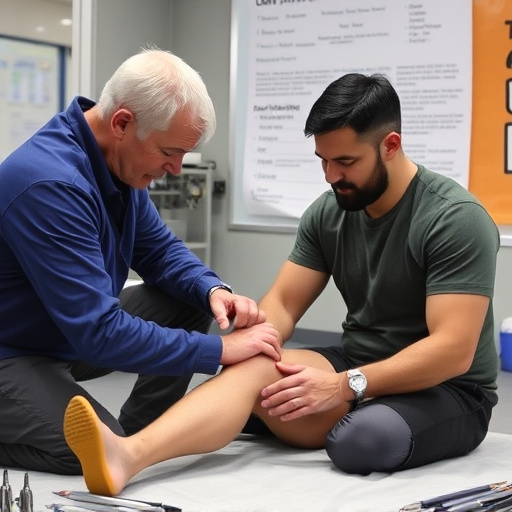Federal injury claims are a key part of employment law, addressing work-related injuries. Governed by federal legislation, this process ensures employees receive compensation and support, including herniated disc treatment plans, for work accidents. Employees must notify employers promptly and provide accurate information. Federal laws protect them from retaliation and facilitate their return to work post-recovery through meticulous documentation, legal procedures, and collaborative strategies like accommodations and ergonomic solutions.
Federal injury claims significantly impact employment statuses, necessitating a deep dive into their legal intricacies. This article explores the complex interplay between these claims and employment rights, focusing on understanding federal laws governing workplace injuries. We delve into post-injury responsibilities for both employers and employees, compensation processes, and strategies for successful return to work. By navigating these aspects, individuals can ensure fair treatment and efficient resolution in cases involving federal injury claims.
- Understanding Federal Injury Claims: A Legal Perspective
- Employment Rights and Responsibilities After an Injury
- Navigating Compensation and Return to Work
Understanding Federal Injury Claims: A Legal Perspective

Federal injury claims are a significant aspect of employment law, addressing injuries sustained by workers during their professional duties. These claims are governed by federal legislation, ensuring that employees receive compensation and support for work-related accidents. From a legal perspective, understanding federal injury claims involves comprehending the intricate web of regulations and rights designed to protect workers. This includes recognizing various types of injuries, from physical harm to specific conditions like herniated discs, which often require specialized treatments such as therapeutic exercises tailored to individual needs.
The process involves detailed documentation, medical assessments, and legal procedures. Employers are obligated to report and investigate incidents, while employees must provide accurate information about their injuries. The goal is to facilitate a fair and efficient claims process, ensuring that workers receive appropriate herniated disc treatment and personalized treatment plans as part of their compensation. This legal framework aims to minimize the impact on both employers and employees, fostering a safer work environment.
Employment Rights and Responsibilities After an Injury

After sustaining an injury, whether it’s from a work-related incident or otherwise, employees have specific rights and responsibilities. In light of federal injury claims, understanding these is crucial. Initially, individuals must notify their employers about the accident promptly to ensure proper documentation and initiation of any necessary safety protocols. This step is vital as it paves the way for the employer to provide appropriate accommodations or alternative duties while the employee recovers.
Additionally, employees are entitled to receive medical treatment, including access to rehab services and sports injury treatment (if applicable), without fear of retaliation from their employers. Federal laws protect these rights, ensuring that individuals can seek pinched nerve relief or other forms of healthcare assistance without jeopardizing their employment status. This support is not only beneficial for physical recovery but also aids in a smoother transition back to work once the injury has healed.
Navigating Compensation and Return to Work

Navigating the complexities of federal injury claims can be a challenging yet crucial step for individuals aiming to return to work after an accident. The process often involves meticulous documentation, legal procedures, and a thorough assessment of the impact on one’s ability to perform job duties. During this period, accessing appropriate medical care, such as post-accident rehabilitation, plays a pivotal role in managing pain and implementing personalized treatment plans.
Effective management of federal injury claims enables employers and employees to collaborate on strategies that facilitate a safe and successful return to work. This collaboration can include tailoring accommodations, adjusting job responsibilities, or implementing ergonomic solutions to accommodate the employee’s needs while ensuring productivity and job satisfaction.
Federal injury claims significantly impact an individual’s employment status, underscoring the crucial need for a comprehensive understanding of both legal rights and responsibilities. As discussed in this article, navigating the complexities of compensation and return-to-work processes is essential to fostering a supportive work environment. By recognizing the effects of federal injury claims, employers can actively contribute to the rehabilitation and reintegration of employees, ensuring a smoother transition back into the workforce.














